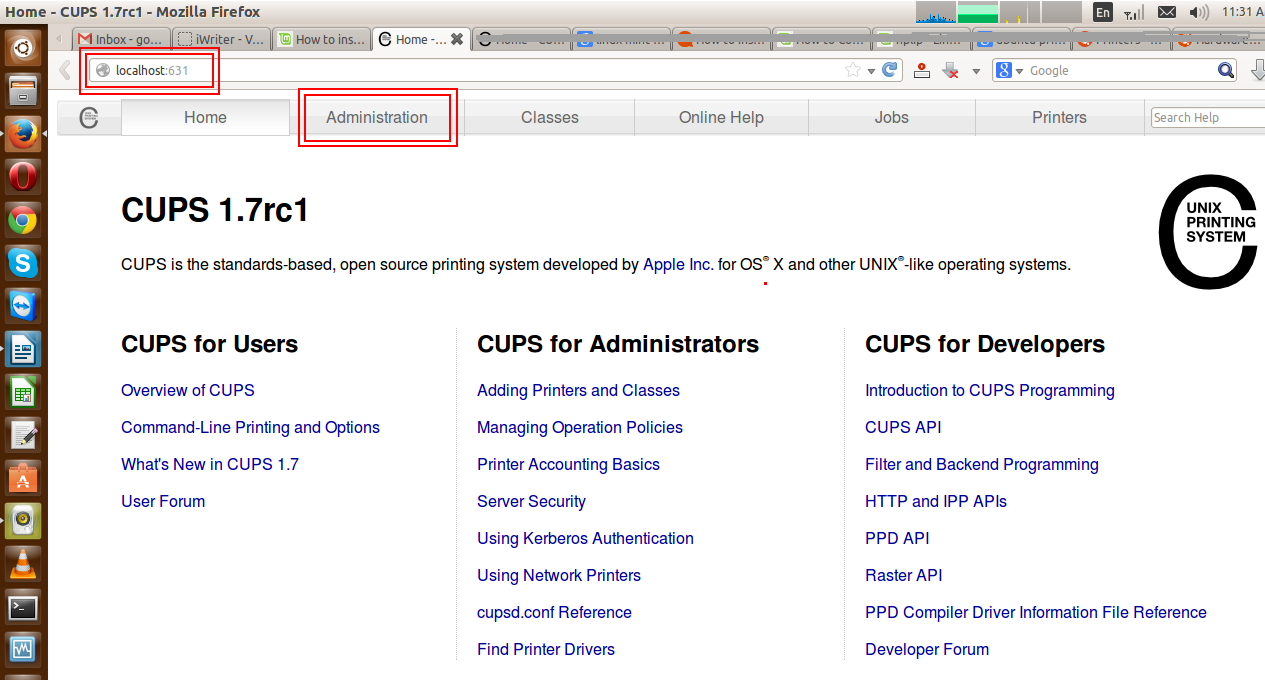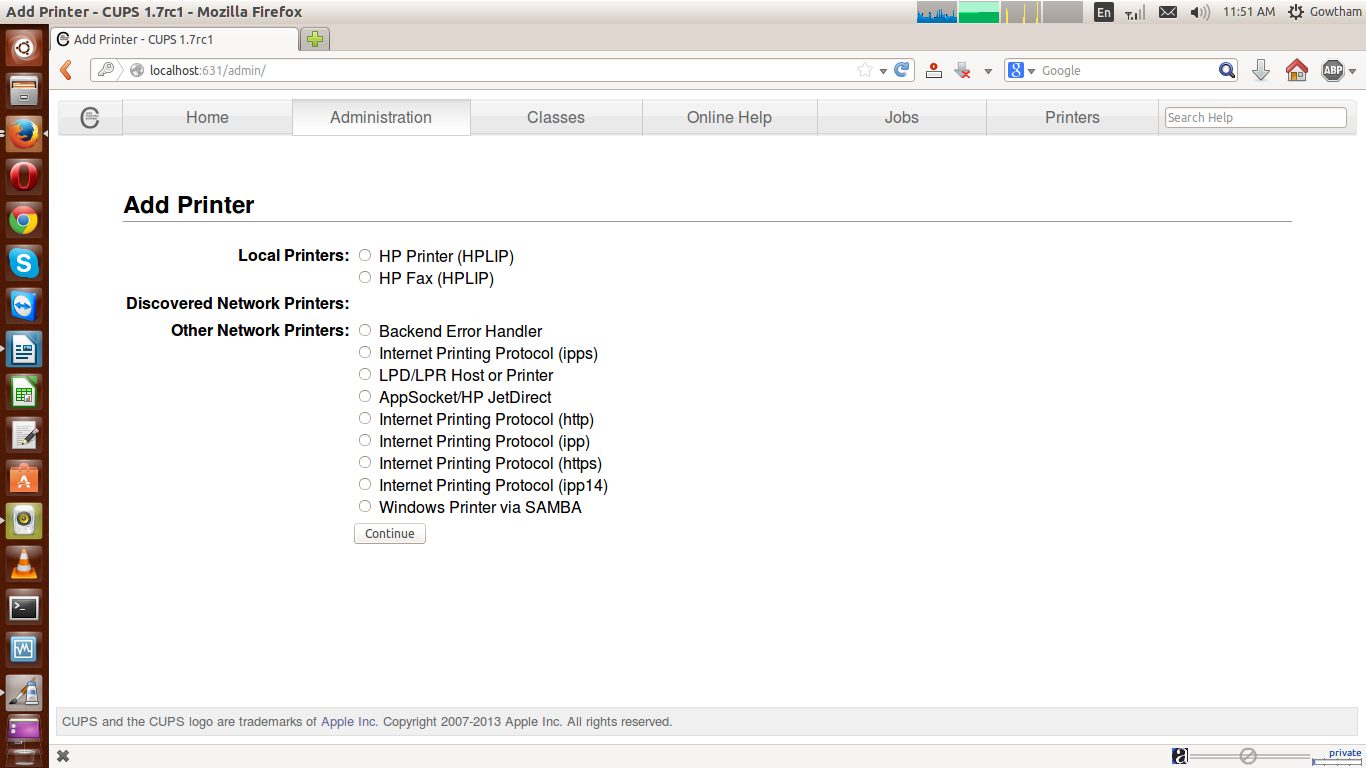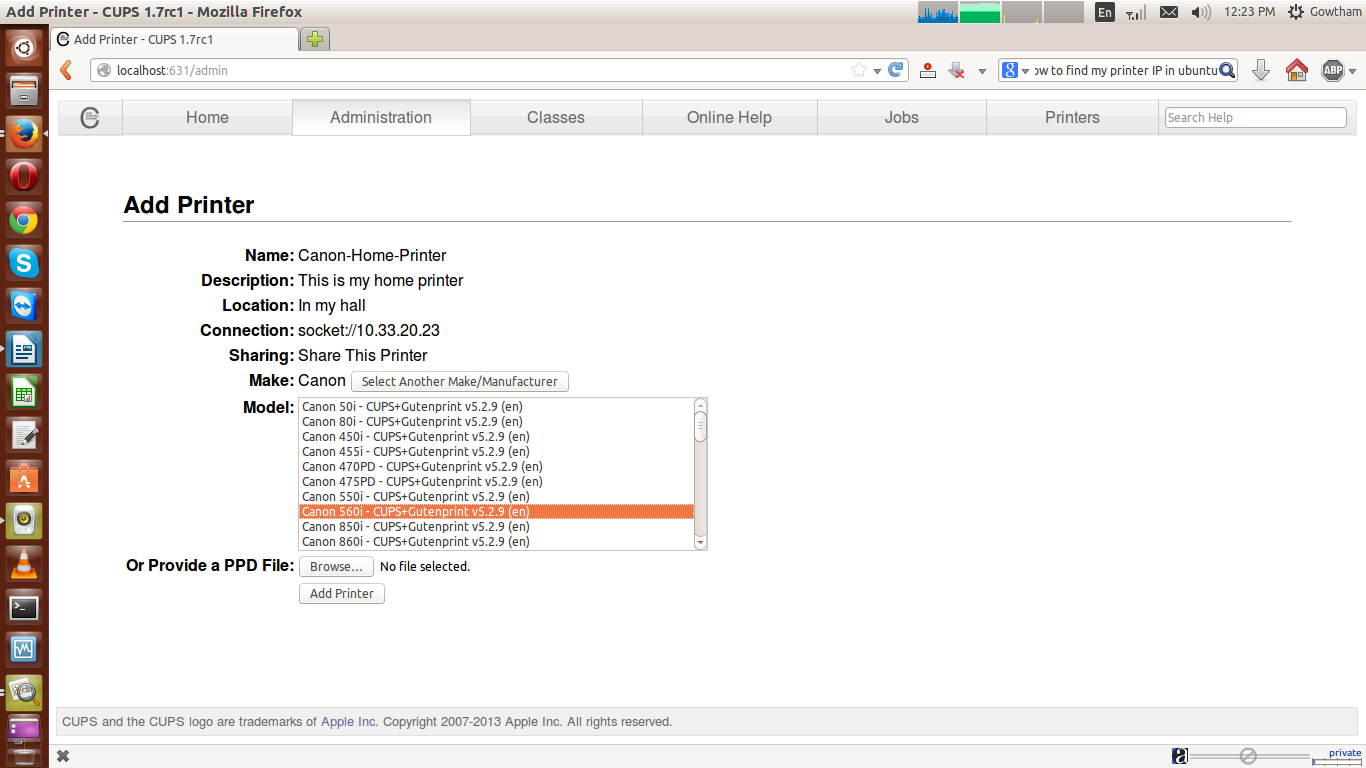Articolo di Kerry Blake
Se state pensando di acquistare una nuova stampante e attualmente usate Linux con le distribuzioni Ubuntu o Mint, i due più popolari sistemi operativi desktop, accanto a Windows e OSX, probabilmente si dovrebbe comprare una stampante che possa funzionare senza problemi con la vostra Linux box, così come è fornita dal produttore.
Le periferiche per computer come stampanti, webcam, scanner e dispositivi Internet mobili possono funzionare sulla vostra distro subito come su un computer Macintosh. Sia la comunità di Ubuntu che quella di Mint hanno aggiunto costantemente i pacchetti necessari al loro sistemi operativi in modo che tutti i numerosi hardware che funziona con Windows possano funzionare anche con Linux. Potete dare un’occhiata all’ elenco raccomandata di stampanti https://wiki.ubuntu.com/HardwareSupportComponentsPrinters per le distribuzioni basate su Debian, se si vuole comprarne una che funziona con la vostra macchina senza dover aprire il terminale. Se trovate la vostra stampante in questa lista, si può facilmente farla funzionare.
Senza fare nulla
Se possedete già una stampante e siete solo alla ricerca di un driver, senza collegarla al vostro computer, probabilmente si dovrebbe prima collegare la stampante con la macchina. La maggior parte del tempo la propria macchina Linux, specialmente in esecuzione su Linux Mint e Ubuntu riconoscerà la stampante e probabilmente caricherà i driver per il funzionamento della stampante senza l’installazione di alcun driver e software aggiuntivi. E’ anche una buona cosa aggiornare il sistema operativo se avete ancora alcuni aggiornamenti software in sospeso che non avete ancora trovato il tempo di fare.
CUPS
A volte, la stampante potrebbe non funzionare con la vostra macchina Linux e si dovrà installare i driver necessari per farlo funzionare come in Windows. La maggior parte dei produttori di stampanti hanno i driver della stampante per Linux, ma alcuni non li producono. Secondo le statistiche delle piattaforme OS pubblicate su W3Schools, Linux ha il 5% e Mac circa il 10% della quota di mercato ed il resto del mercato desktop appartiene a Windows. Con meno quota di mercato anche Apple affronta problemi di compatibilità con le periferie. Per affrontare questo, sia i Mac, che sono basati su Unix e Linux, che è Unix-like fanno uso di CUPS (Common Unix Printing System). CUPS è installato di default in Ubuntu e Linux Mint e se per qualche strana ragione non riuscite a trovarlo, si può facilmente installarlo con il comando seguente.
sudo apt-get install cups
Uno svantaggio di utilizzare CUPS è che potrebbe non trovare facilmente il livello di inchiostro della stampante nella cartuccia dalla macchina Linux né può scoprire che cosa non funziona con la vostra macchina o con la cartuccia di inchiostro della stampante a causa della mancanza di software proprietario quando la stampante non sta funzionando correttamente. Anche questo non fa una grande differenza se si acquista cartucce originali o OEM da Ink Station, poiché non vi è alcun uso pratico per il chip nella cartuccia. Ci sono alcuni software di terze parti che possono essere una alternativa alla utility della stampante, ma non possiamo essere sicuri che funzioneranno con tutte le stampanti.
CUPS è diventato il nuovo standard di stampa in molte distribuzioni Linux, in particolare quelli che sono basate su Debian. Con CUPS potete utilizzare il servizio di stampa dal browser in quanto fa uso di IPP ( Internet Printing Protocol). Possiamo anche dire che con CUPS, Linux ha ora il supporto per più stampanti appena installato rispetto a Windows ed è abbastanza facile aggiungere e configurare nuove stampanti. Vi guiderà attraverso i passi per aggiungere una nuova stampante al computer se non funziona subito una volta collegata.
1. Si può accedere a CUPS con il proprio browser. Fai partire il tuo browser ed accedi al seguente URL:
http://localhost:631/
2. Ora la pagina visualizzata sarà simile nell’immagine qui sotto. Si potrebbe aver già riconosciuto il dock di Unity sulla sinistra, stò utilizzando Ubuntu (13.10). Sarete in grado di accedere a CUPS sullo stesso indirizzo anche su Linux Mint, o qualsiasi Linux su cui sia installato CUPS. Una volta che siete su questa pagina, clicca su “Administrator”, e quindi fate clic su “Aggiungi stampante”. Potrebbe essere richiesto username e password del vostro computer.
3. Nella pagina “Aggiungi stampante”, scegliere l’opzione appropriata – scegliere stampante locale HP (HPIP) o una stampante o stampante su altre reti o Selezionare l’Internet Printing Protocol.
Nel campo di collegamento si dovrà inserire l’indirizzo IP della stampante nel formato, socket://hostname.
Potrebbe essere simile a questa, socket://10.33.20.23
Si potrebbe trovare l’indirizzo IP del vostro computer, dal menu della stampante o semplicemente stampando una pagina di configurazione. Stampanti diverse lo fanno in modo diverso, quindi se non siete sicuri, come stampare una pagina di configurazione o dove potrebbe trovarsi nella console della stampante, fate riferimento al manuale fornito con la stampante.
Se la stampante di rete è connesso a un server, l’indirizzo IP del server sarà usato come indirizzo IP della stampante, è possibile trovarlo utilizzando i seguenti comandi nel terminale.
ifconfig
iwconfig
Se la stampante di rete non è collegata al computer in modalità wireless ed è collegato alla macchina tramite un cavo LAN, apparirà nel menu della stampante o si sarà in grado di trovare l’indirizzo IP dal router.
4. In questa pagina vi verrà chiesto di dare un nome, la descrizione e la posizione del vostro computer, è anche possibile scegliere se si desidera condividere la stampante o meno con l’opzione di condivisione. Premete “continua” per andare alla pagina successiva. In questa pagina dovrete scegliere il vostro produttore della stampante e successivamente il modello, fatto questo premete su “Aggiungi stampante”. Si potrebbero trovare quasi tutte le stampanti nella lista, se non la trovate, dovrete aggiungere manualmente il file PPD, questo avrà tutte le informazioni necessarie.
5. A questo punto sarete in grado di impostare le opzioni predefinite e siete pronti a stampare. La stampante sarà pronta per l’uso, e ogni volta che è necessario stampare qualsiasi cosa è possibile accedere alla stampante dall’indirizzo
http://localhost:631
Popular Posts:
- None Found




For HP printers and scanners I always use the latest HPLIP package that is available on sourceforge.com
After following all the direction to install Canon LBP3300 on Linux Mint I came to conclusion that the problem does not solved. To overcome, I tried other way to diagnose and to try. I found that in this OS Linux Mint 17, I am the beginner, although the printer detected with well configuration, to lp0 and fifo0, in the look process info utility, the printer job looks like floating aimlessly, orphan. At the time of trial and errors, I observed that, config-printer utility cleans head correctly where the printer works, then PDF application has printed when job priority changed from 50 to 1, also Liberoffice writter printed one job. But when in next session it didn’t worked. I tried to the same, then removed another printer. But again I reached at 0 point.
2) How to set default setting of these Adobe and Liberoffice writters, like print to printer, not PDF?
So, I think, printer installs and viewed in correct order. Now if some precise computer man can help me how to give default priority 1 to printing job permanently ? The printing job should set at highest priority processing permanently. I repreat, I just started to use the Linux, though a Windows user.
stampante samsung m207x
non riesco a registrare la stampante sul pc con ubuntu grazie
vorrei riuscire a registrare la stampante sul pc conUBUNTU
vorrei riuscire a registrare la stampante sul pc con UBUNTU